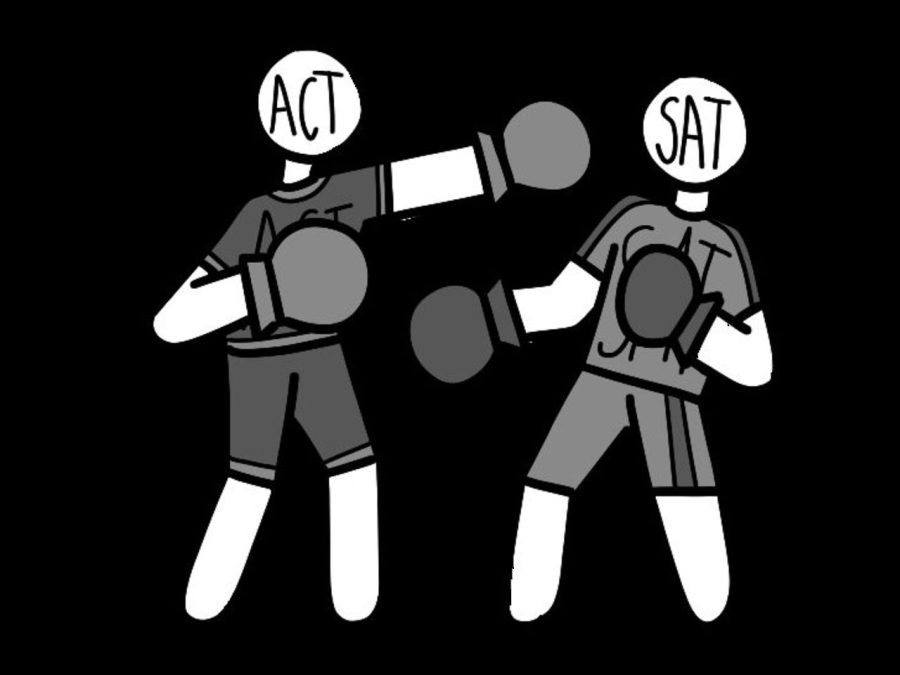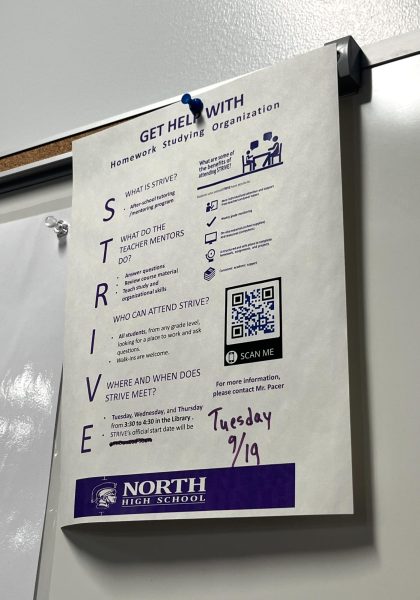SAT vs. ACT: A student’s guide to standardized testing
December 7, 2022
At a certain point in a high school student’s career, everyone must take a standardized test or plan to take one– a point that usually comes during junior year. The first step in preparing for a standardized test is choosing a test to focus on: the SAT or the ACT.
Both tests cater to different areas of focus, but students usually focus on the one that suits their academics needs best. Choosing which test is best may be difficult, as both tests have strengths and weaknesses to their overall curriculum.
“Having data points [standardized test scores] that tell you how you’re growing and how you’re performing around your peers are important for students to have. I think having data to track progress is a great idea, both for individual students and for the school, “ Associate Principal of Student Services Dr. Erin Ludwick said.
The ACT test consists of four multiple-choice tests: English, mathematics, reading, and science, with an optional writing portion. Depending on the rigor of the individual version of the ACT, each section is scored off of how many questions are correct, projecting a score out of 36, which is then averaged with the rest of the three tests to give an overall score ranging from one to 36.
“ACT tends to be a more straight-forward test. What you see is what you get. ACT describes itself as testing what you’ve learned in school, so it’s very reflective of the material you’ve learned recently. SAT describes itself as testing critical thinking skills, so many questions feel like a trick or a trap,” Founder and Executive Director of Achieve More Tuturing Carol Clark said. Although Illinois is now an SAT state, all 4-year colleges accept both tests, so students should prepare for the test they will do best on.”
The SAT is usually a three hour-long test, consisting of a math section and an evidence-based reading/writing section. The two individual tests are scored from 200-800 each, meaning combined, they total anywhere from a 400 or 1600 point score.
“It is really not one is better- it is a personal preference,” ExcelEdge teacher Amy Stoops said. “SAT was redesigned a few years back to align with the standards we are teaching at the high school level. The reading test has science and social studies incorporated into the test so a separate test is not needed. SAT requires students to read closely and show evidence for answers.”
As for both tests, strategies differ. Since each test is separated into sections, students must determine which areas to prioritize most, and how much aid they need. There are many opportunities for students to seek help with standardized tests through preparation classes and personal tutors.
“For strategies, I think the most optimal ones are definitely to make sure you are pacing yourself throughout the test, not wasting too much time on questions you are struggling with so you can focus on the questions you are confident in, and ensuring that you are reading the questions carefully to actually answer what is being asked of you,” ExcelEdge teacher Joe Tenerelli said.
Although the formatting is unique to each test, tutors and teachers are able to teach students strategies to prepare them for the test well.
“I make sure my students know the specific punctuation rules for the test. I also tell my students the more you interact with tests (physically crossing out answers, mapping in reading, pointing at charts in science) answers come more quickly and are often more accurate than just staring at the page,” Achieve More Tutoring Inc. tutor Jackie Dudkowski-Johnson said. “Also in reading when teaching students how to eliminate, I read through all the options and ask myself ‘Yes I like it’, ‘No I’m eliminating it, and ‘Maybe I need to go back and think about it’. It gives a student a chance to look at all the answers and eliminate through the answers which again helps with accuracy.”
The SAT is required at DGN, however, students have the ability to retake the SAT or take ACT tests instead, choosing how much they want to work on each test. With tutoring programs and preparation classes through DGN. students are provided with opportunities to study for standardized tests and accel at the test of their choosing.















